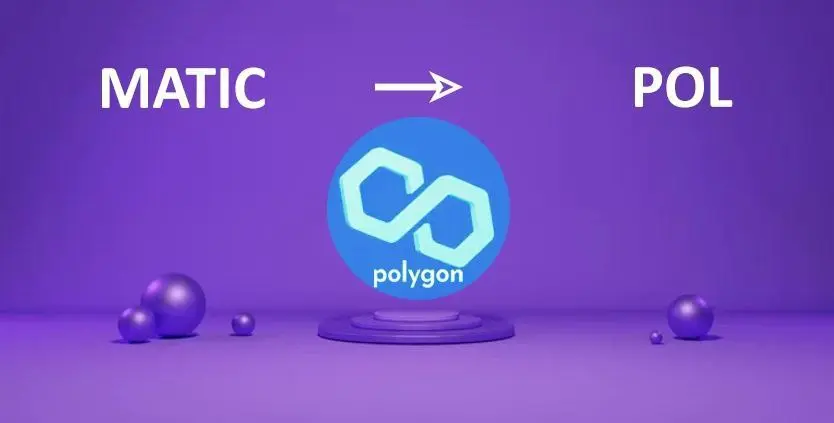Polygon developers have officially announced the long-awaiting process of moving the MATIC token to POL, which is one of the main achievements of the network, crypto sources reported on Wednesday.
This transition reportedly occurs as an annual community vote after the Polygons stake token significant discussions and intentions to improve the token’s serviceability within the Polygon PoS chain. Insider’s claim that the new POL token will have all token supply of 10 billion MATIC token and is intended to help Polygon become a ZK (Zero-Knowledge) chain.
Community-Driven Migration of MATIC Token to POL
Following over nine months of discussion/expansion and social media posts, Polygon developers on September 4, 2024, launched the transition from MATIC token to POL. This change brings POL as the new ticker symbol of the native gas and staking token on the Polygon PoS chain. The POL launch is one of the several steps Polygon has undertaken as part of its strategy to build a ZK chain and integrate with AggLayer, a tool designed to route liquidity and state across chains.
Reports claim that the conversion rate from MATIC token to POL is initially 1:1, with a gradual increase to 2% in 10 years for network expansion. In this regard, this emissions model is designed to offer consistent incentives for validators, thus signifying interest for new entrants into the ecosystem. ”For validators, this emissions model guarantees a constant income, which makes it appealing for new validators to come and stake,” Polygon developers pointed out in their latest report.

Polygon PoS chain MATIC holders do not need to do anything since the POL transition will be done automatically. However, those who possess MATIC on Ethereum, Polygon zkEVM, or any CEX will have to passively transfer their tokens to the POL through the migration contract. This process will help to adopt all the users of the old system to the new one so that the new system will be fully implemented.
POL’s Role in Polygon’s Future Growth
The new POL token is not just a name change, but rather a progression of its role within the Polygon ecosystem. In the future, POL is expected to have more features than it currently does today, including block production, zero-knowledge proof generation, and participation in Data Availability Committees (DACs). These roles are vital as Polygon continues to ascend as one of the go-to blockchain solutions, especially when it comes to scalability through the use of zero-knowledge protocols.
Polygon currently employs two primary scaling solutions: an integrated sidechain called Polygon PoS and a zk-rollup network called Polygon zkEVM. This move to introduce POL as the network’s newly improved native token is consistent with Polygon’s vision of enhancing these technologies to meet modern-day crypto market dynamics.

According to a statement from Polygon, “The POL token will serve as the foundation for future innovations on the Polygon network, enabling more efficient and secure operations while also providing new opportunities for participants in the ecosystem.”
Market Response and Future Outlook
The market has welcomed this migration, and several prominent exchanges are likely to soon list the new POL token. This listing will enable users keen on utilizing Polygon’s services to have easy access and numerous opportunities to interact with the Polygon network. It has also resonated well in broader crypto circles, as people view it as a strategic step to establish Polygon as a leader in blockchain scalability. However, while there are positives ahead, challenges also lie ahead. Although it may be good news for validators, making it easier for them to obtain additional tokens, this approach could gradually lead to inflation.
This potential problem should be addressed to maintain the value of POL and keep it attractive for further investments. Moreover, for POL’s success, Polygon must continue to deploy its ZK technologies and correctly integrate AggLayer. These innovations are fundamental to Polygon’s mission of bringing the blockchain ecosystem closer together and making it more efficient. Hence, the prospects and continuous advancement of these technologies will continue to interest both society and the market.
End Note
The MATIC Token to POL migration can be regarded as a major step in the Polygon’s evolution to becoming a major player in the blockchain world. In fact, the innovative features and features of the POL token and its focus on scalability and security make it an essential component of the future of Polygon. A few issues are persisting; however, the encouraging market sentiment and the strong community backing endorse that Polygon is headed in the right direction to accomplish its vision. With the ongoing development of the network this transition to POL may well be looked back upon as a turning point in their history. Keep following TheBITJournal for latest crypto updates and more.




























